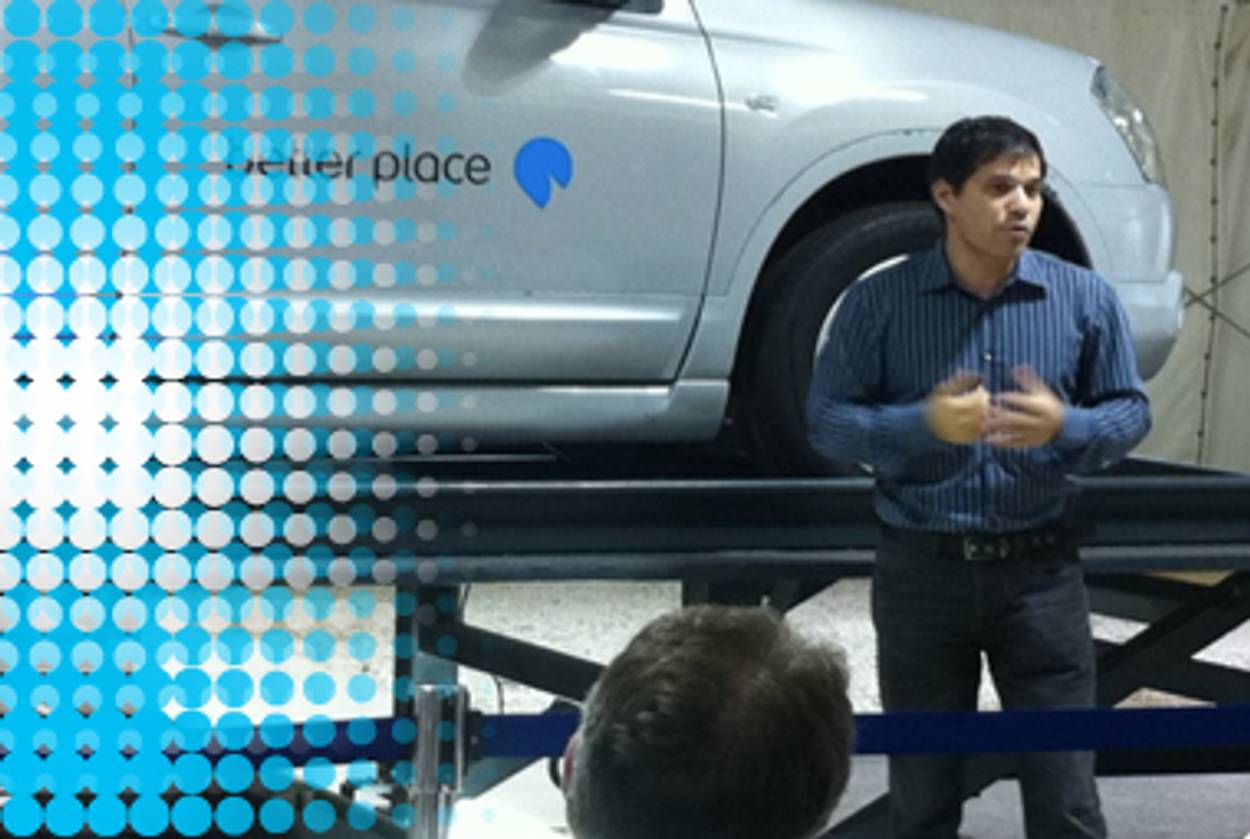Driving to a Better Place
High-Tech Holy Land




“When Thomas Edison was finished inventing the electric light bulb, the price of oil went to zero and new uses had to be found for kerosene. What we are doing is trying to repeat Edison’s feat.” After spending a few hours visiting Israeli entrepreneur Shai Agassi’s electric vehicle (EV) start-up, Better Place, I wouldn’t bet against Agassi’s challenge to America’s greatest inventor.
Youthful, enthusiastic and well-spoken, Aggasi has raised over $750 million, which he claims makes Better Place “one of the best-financed pre-I.P.O.s in history.” His dream: To convert the world’s automobiles from gasoline to battery power. In 2009, Time named him one of the “100 People Who Most Affect Our World;” profiling him, it said he was “the closest we’ve seen to a Steve Jobs of clean tech.”
I got the chance to meet Agassi during a recent four-day “Israel Innovation Summit,” sponsored by Beit Issie Shapiro, an Israeli non-profit organization that provides innovative services for children with special needs. He spoke to us from his sparkling new demonstration center in Ramat HaSharon. It features test drives of EVs and working models of the battery-changing and -charging stations that are at the heart of the Better Place concept. In a nice symbolic touch, the center is inside a gigantic tank that used to be Israel’s major gasoline distribution hub.
The idea behind the changing stations is to treat the car battery as an interchangeable module, enabling an instant charge, after approximately 100 miles, that will allow long-distance driving—heretofore one of the main hurdles to electric-powered vehicles.
Better Place is preparing for a full-scale consumer test by the end of 2011. To that end, it is building over 50 service stations throughout Israel where drivers will have their cars’ batteries automatically switched for a newly charged one—in less time than it takes to fill up a tank with gas. The company is also ordering 100,000 specially-built Renault cars, which claim to be “the first full-sized EV with switchable batteries.” Better Place is also preparing test markets in Denmark, Australia, Japan, and North America.
Better Place’s business model projects that by the end of 2012, the subscription-based cost per mile of driving will be the equivalent of $2.25 per gallon of gas, with the cost falling to less than a dollar per gallon by 2015. When asked about the cost of the infrastructure needed to build the charging stations and supply subscribers with “charge spots” for their home and office use, Agassi said that in Israel (and, for that matter, virtually anywhere else), the capital costs are less than the amount spent for “six days of gasoline” nationally. In Israel, that amount is approximately $150 million.
I was given the opportunity to test-drive one of the Better Place cars. It had much better pickup than any hybrid I have tried, and the experience of driving it is noticeable only for how similar it is to any other car.
Two years ago, Deutsche Bank analysts concluded that Better Place’s approach represented a “paradigm shift … which has the potential to eliminate the gasoline engine altogether.” When Agassi was asked if his innovations are protected by patents, he replied: “If companies want to replicate what we are doing, they can find a way around any of our innovations; however, our best protection is skepticism.” It is easy to see why many might doubt that the Better Place system can “disconnect the entire United States from gasoline.” However, with investors providing nearly a billion-dollar bet on Agassi, one might wonder if more than a few oil ministers aren’t experiencing some sleepless nights.
Morton Landowne is the executive director of Nextbook Inc.